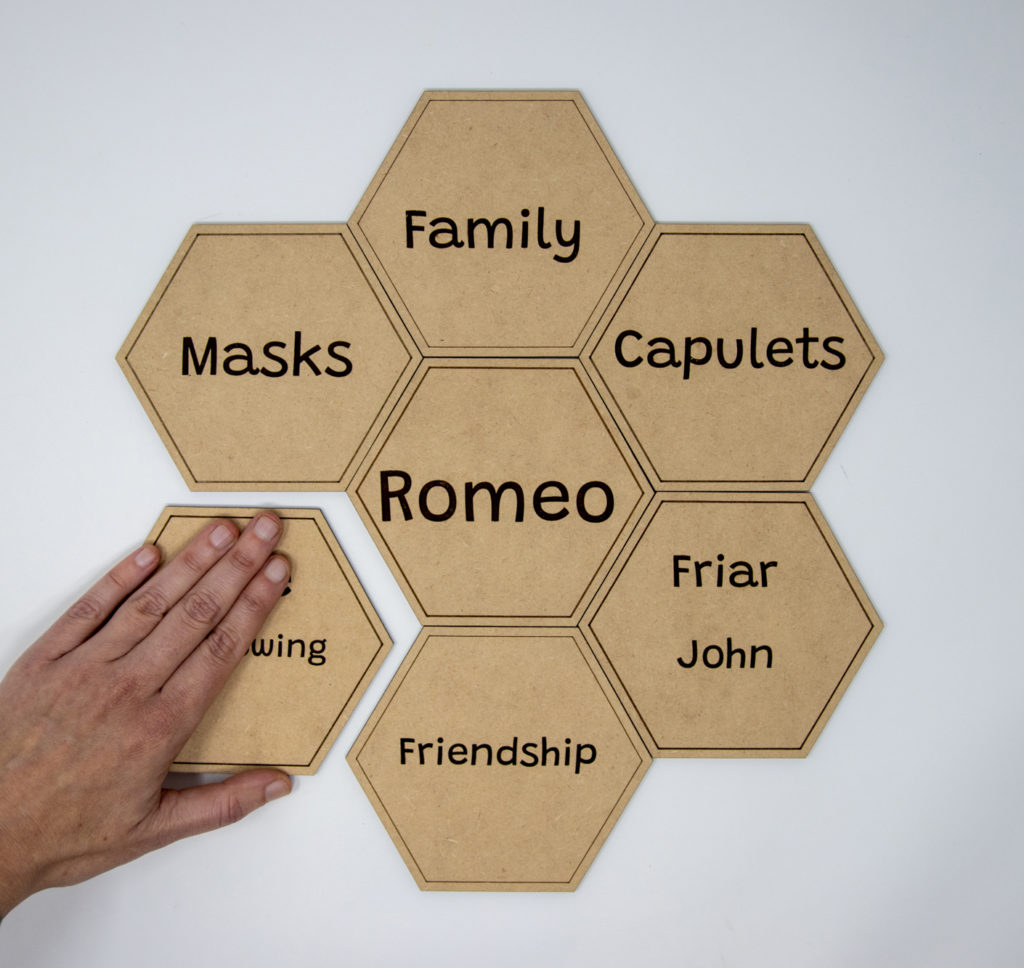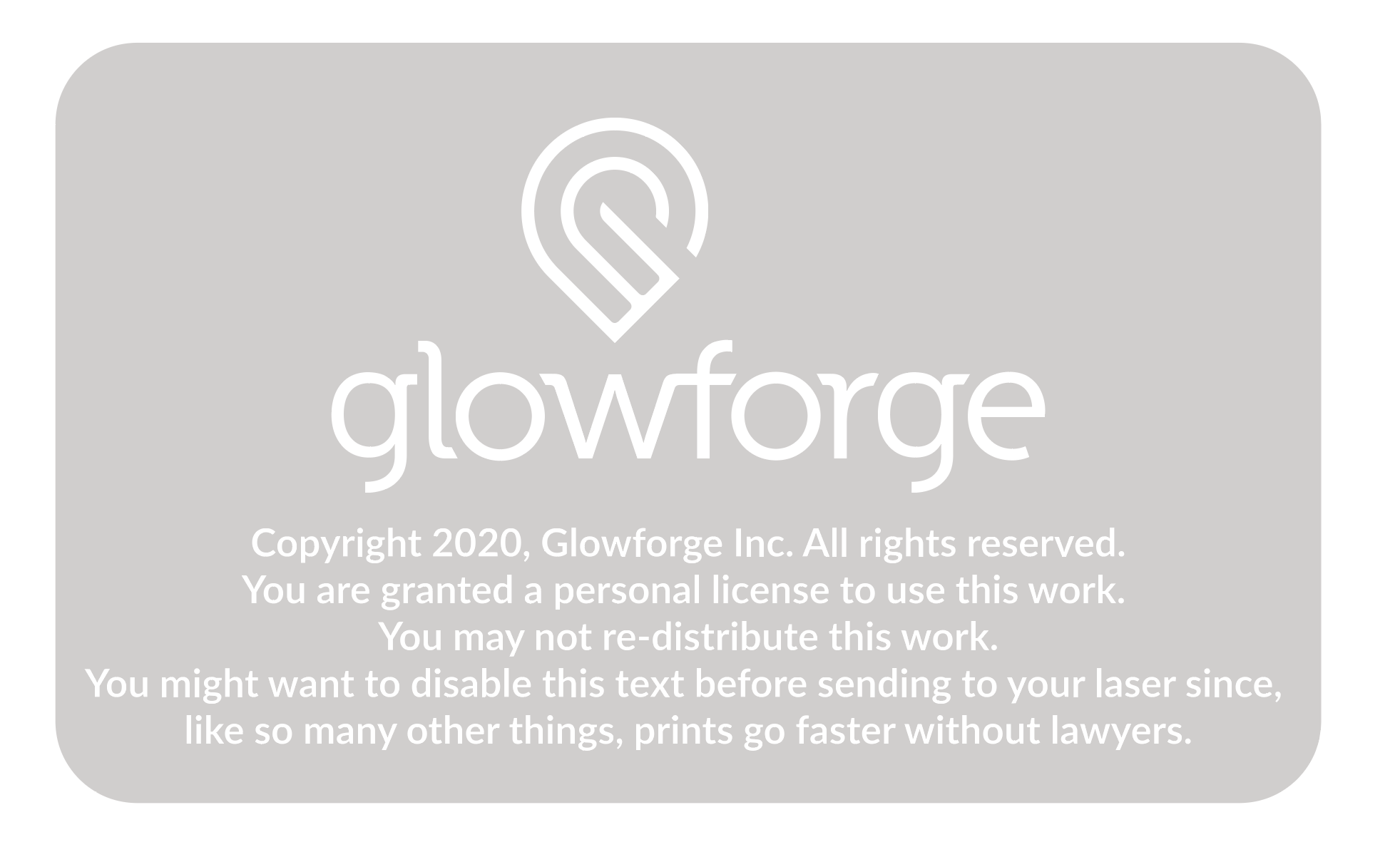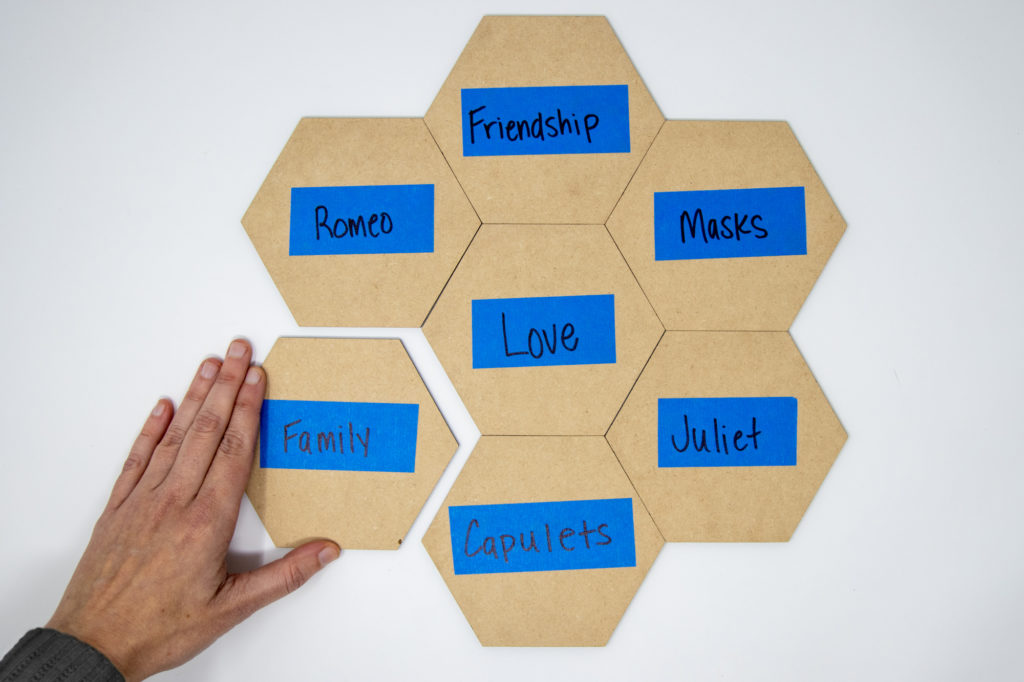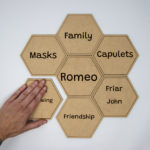
Grade Level
K, 1, 2, 3, 4, 5, 6, 7, 8, 9, 10, 11, and 12
Difficulty
Easy
Duration
1 hour 45 minutes
Subjects
Drama
English
Geography
History
Humanities
Literature
Reading
Science
Social Studies
U.S. History
Writing
-
Students leverage technology to take an active role in choosing, achieving, and demonstrating competency in their learning goals, informed by the learning sciences.
-
Students communicate clearly and express themselves creatively for a variety of purposes using the platforms, tools, styles, formats and digital media appropriate to their goals.
Vocab
Hexagonal Thinking
Mind Map
Thought Process
Effective Communication
Author
Glowforge
Licensing

Lesson for Download
Lesson Handout
Overview
Empower students to visualize their thinking. In this activity, students can explore complex concepts by creating a Hexagonal Thinking model. This activity allows students to visualize their thinking by linking elements together and creating a map of their thought processes. Make the pieces reusable by printing the shapes in acrylic and labeling them with dry erase markers!
Objective
Thematic Questions:
Standards:
ISTE Standards for Students
Supplies
For each Hexagonal Thinking mode you will need:
- 2x Any Light-Colored, Opaque Medium Acrylic
- Optional: 2x Maple Plywood (Finished) Medium
- Dry or wet erase markers for labeling the Hexagonal Thinking pieces
Catalog Designs
Description
Lesson Outline:
Get Ready:
- Have students read through the activity details to familiarize themselves with the steps.
- Students should gather all of the materials needed to print and customize the Hexagonal Thinking pieces.
- Prior to starting the activity, consider modeling the Hexagonal Thinking process using general knowledge labels such as age-appropriate pop culture or animals.
- To learn more about Hexagonal Thinking, explore the Cult of Pedagogy article “Hexagonal Thinking: A Colorful Tool for Discussion.”
Production Time:
Print – 97 minutes (print times can vary based on materials)
Lesson Instructions
Section 1 – Create:
- Set up the print in the Glowforge App.ach set comes with 12 hexagons. You can delete or edit the design’s text in the Glowforge App.
- Create each Hexagonal Thinking set by following the steps of the Decorative Signs (Set of 12) design project to print its parts. If choosing an optional material to print on, consider how students will write on the pieces so that they can be used again.
- Sort the Hexagonal Thinking pieces into sets of 12 each.
- Compile a list of ideas, people, events, and topics based on a current unit of study that students can use to create connections.
Section 2 – Use:
Have small groups…
- Unpack their Hexagonal Thinking sets and accompanying list of terms.
- Label their hexagons with terms from the list using dry or wet erase markers or other writing tools, depending on the print material chosen.
- Arrange their labeled hexagons to demonstrate connections among the ideas, people, events, and topics. Encourage groups to communicate about why and how they are organizing their pieces. Prompt students to think about their organization using questions such as:
- Which connections are the easiest to make? Are there any labels that are unexpected or difficult to link?
- If you could add an extra hexagon to your set, what idea, person, event, or topic would you add? Why?
- Reflect on their experience using the Hexagonal Thinking strategy. Start by having students select four of their concept connections. Then, have them create a written or video reflection about why those pieces were paired together, along with any other discoveries that they made during the experience. This can also be done individually.
- Following reflection and completion of the Hexagonal Thinking activity, remove the writing from the hexagons so that they can be reused in the future.
Reflection Questions:
Help students consider…
- How did your understanding of the concepts evolve through discussion with your group?
- How did the Hexagonal Thinking strategy help you connect concepts in new and different ways?
- How did the arrangement of the Hexagonal Thinking pieces change based on different group members’ thinking?
- How might we reuse the Hexagonal Thinking method throughout the unit?
Pro Tips:
- There are two files for this design. To get the desired number of Hexagonal Thinking pieces, print any combination of files 1 and 2.
- File 1 prints eight hexagons
- File 2 prints four hexagons
- If creating prototypes prior to doing final prints, use cardboard for test prints. Just remember that if the design uses joinery such as slots or finger joints, these may need to be adjusted to suit the prototyping materials.
- When choosing materials, make sure to use materials that are laser compatible. You can learn more about what materials are compatible with Glowforge here.
- Demonstrate this type of critical thinking with a sample concept using the Hexagonal Thinking pieces.
- Consider making a permanent and customized version of this project by etching terms or icons on the hexagon labels using the Glowforge app.
- Each Hexagonal Thinking set comes with 12 pieces. Include blank slots in your terms list so that small groups can add their own ideas, people, events, or topics to further their concept connections. Or consider printing extra pieces for groups to use if they want to add additional connections.
- If printing on plywood, use painter’s tape to label and reuse the Hexagonal Thinking pieces multiple times.

Reimagine:
- How could Hexagonal Thinking skills be used at the end of a unit of study? Students can use the Glowforge app to design their own Hexagonal Thinking pieces using text, symbols, and the Trace tool.
- How can we augment customized hexagon labels with videos or links by using QR codes? Individuals or groups record audio or video explanations of the connections between the Hexagonal Thinking pieces. Create QR or FlipgridAR codes that link to their explanations. Attach the codes by using the Glowforge to print directly on the Hexagonal Thinking piece or attach a printed, paper QR code with tape or glue.
Meet Glowforge
The magical 3D laser printer that made this lesson possible. Learn more!




